Approaching Syria’s turmoil through art
In order to never forget, one must continually tell a story, and continually find new ways to tell it Stephen Applebaum spoke to the artists examining Syria’s civil war 11 years after it began
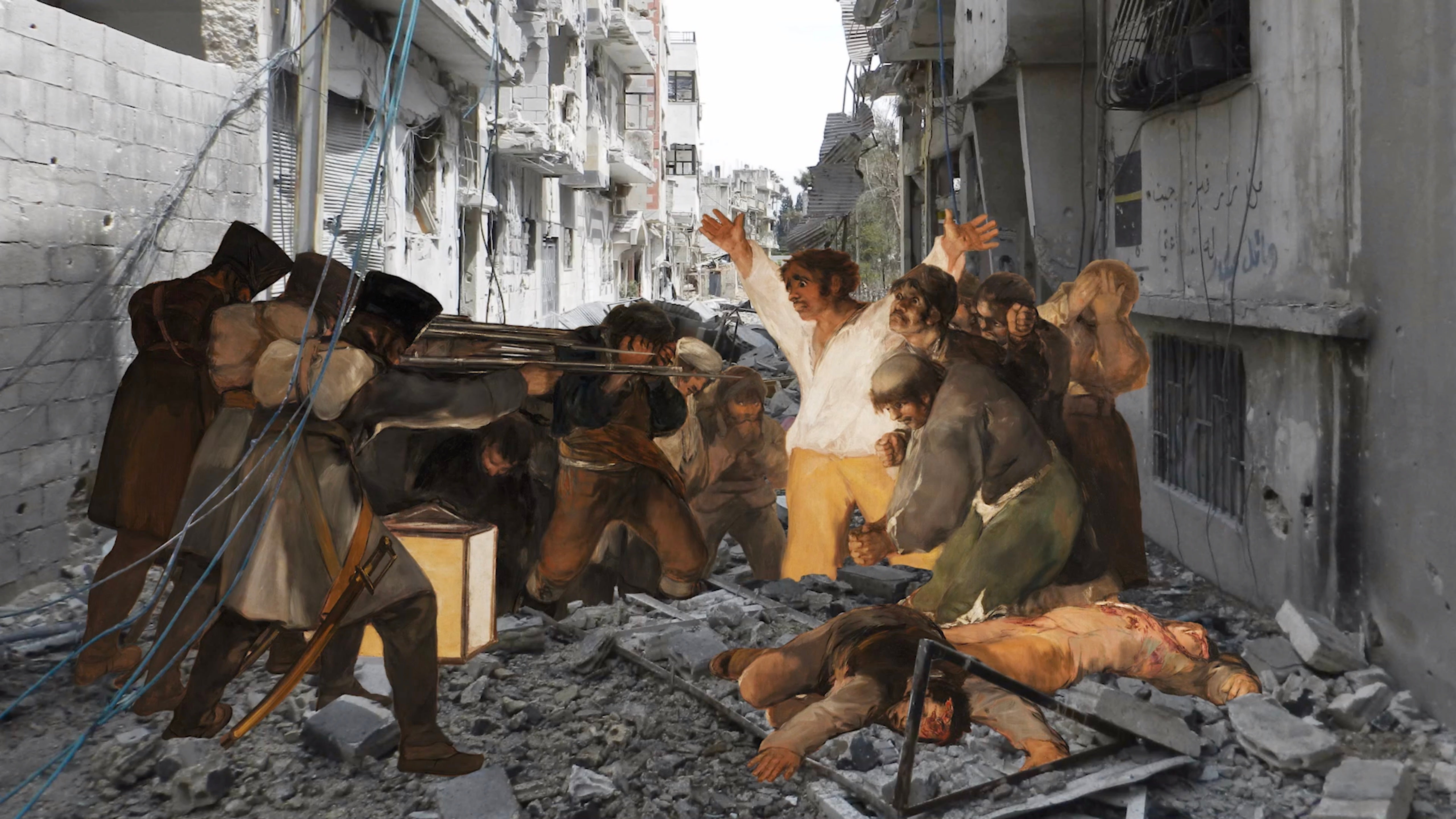
There have been many outstanding documentaries made about the turmoil in Syria, such as Last Men in Aleppo, The White Helmets, For Sama, The Cave and City of Ghosts. Consequently, overfamiliarity is one of the biggest hurdles facing filmmakers who want to engage an audience with stories about a conflict that is now, shockingly in its eleventh year, and being overshadowed in the news by the war in Ukraine – events not unconnected given Russia’s brutal military involvement in both countries. The challenge, then, is to find an angle that feels fresh.
The American actor and filmmaker David Henry Gerson shows how to do it in his feature documentary debut, The Story Won't Die, which approaches events in Syria since the start of the revolution in 2011, through the work and words of artists now living in exile in France, Germany and the Netherlands.
This is not the first time that he has found a new way to explore what is far from virgin territory on screen. In 2016, he won a Student Academy Award with All These Voices, a short narrative film about a traumatic encounter between a young Nazi soldier and a company of actors who have survived the Holocaust, influenced by his interest in Primo Levi.
“I grew up under the mandate of ‘never forget’,” says Gerson, a third-generation survivor himself, “and in order to never forget, one must continually tell the story, and continually find new ways of telling the story.”
This can mean having to navigate what he calls the “Van Gogh effect”, or “Munch effect”, seemingly referring to the desensitisation that often happens when something becomes culturally ubiquitous.
“We saw Munch’s The Scream on plates, on scarves, on magnets, on computer backgrounds,” he says of a recent visit to the Munch Museum in Oslo. “You’ve seen this image so many times that by the time you get into the museum and have waded through everybody who’s trying to look at this image, it takes a good five minutes of looking before all of your preconceived notions about it are stripped away, and you’re able to actually see the thing in front of you. This was something I was very consciously thinking about with All These Voices. And the same is very much the case with a film like The Story Won’t Die.”
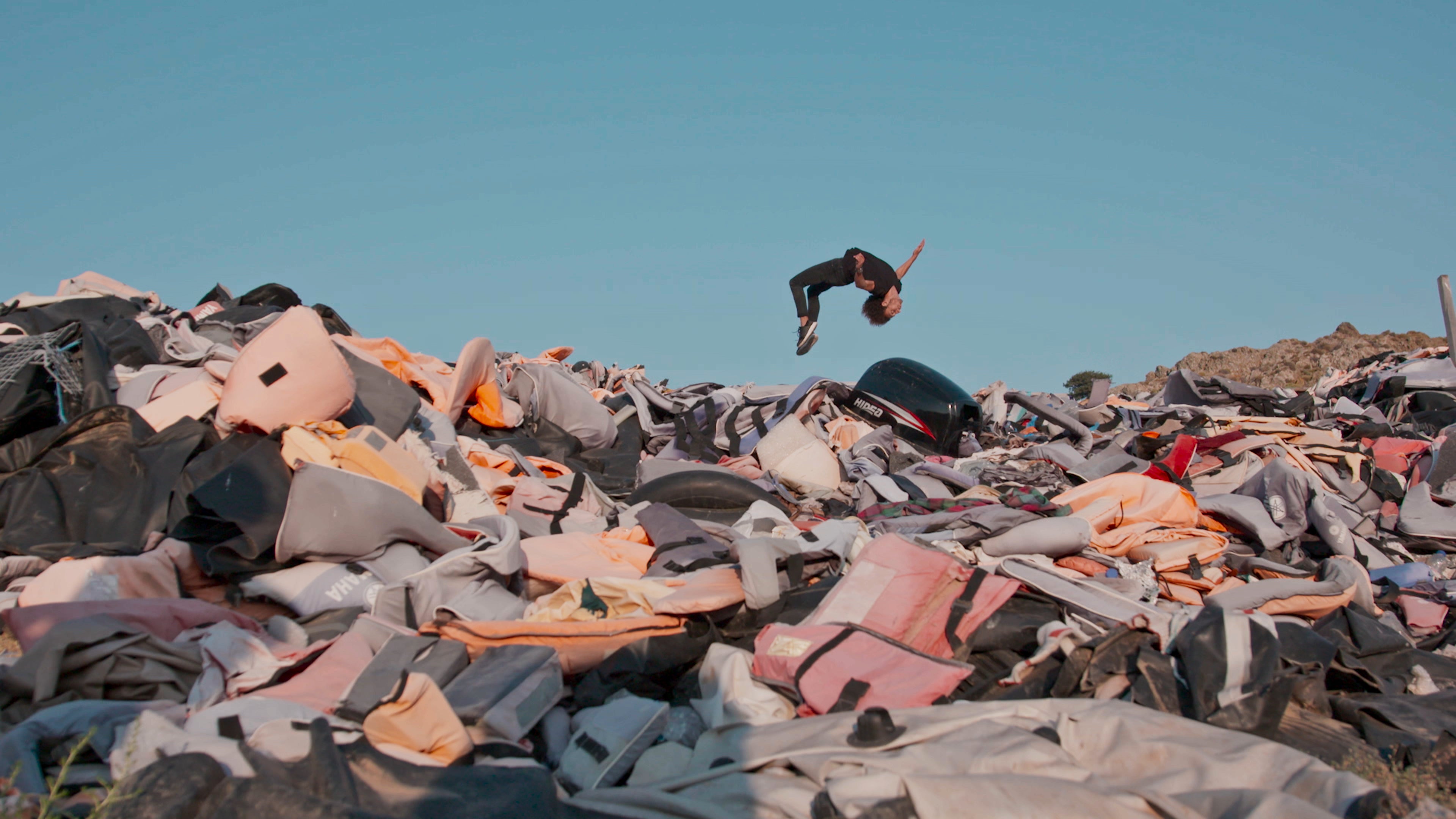
The films reflect Gerson’s interest in the ways that artists try to confront and process the horror and trauma of war. He remembers that when he was growing up, his eyes would often linger on a print of Käthe Kollwitz’s woodcut, Hunger, above his German grandfather’s television, as they incongruously watched The Price is Right.
“It was basically a skeleton mother holding a skeleton child in her arms,” he says. “She was an artist who really expressed the horrors of World War One, and I think that image has always fascinated me.”
When Gerson started work on The Story Won't Die, he began by looking for the artists who are making the Guernicas and the Third of Mays of the Syrian civil war, which first led him to Tammam Azzam, a man who appears to have put art at the centre of his existence. He then widened his search to include people using art as activism. “So there are two different waves of art, in a way, in this film,” he says: “There’s art as active protest to stop an act of atrocity, and then there’s art as an act of sharing your experiences. I hate to say processing because that suggests that there’s a result in the end and there may not be.”
It doesn’t matter how long you’ve been living here, doesn’t matter if you get the German citizenship or not, which I did, we are still perceived as refugees
He also wanted to hear the stories of people forced from their homeland in order to better grasp his father’s journey as someone who was born a refugee in Uzbekistan and grew up in refugee camps in Germany. “So I was sort of trying to understand my own roots, in a way.”
This personal connection was often crucial for getting people to agree to participate in the film. Almost everyone featured has been covered by the BBC, CNN, and others, says Gerson, and some had “instances with press, with journalists, with other documentary filmmakers, that made them very wary of getting involved.” His family story made them feel, correctly, that they would be collaborators on the project, not merely his raw materials.
Diala Brisly, a respected illustrator and painter now based in France, has had mixed encounters with the media. “Sometimes it’s exhausting. Sometimes it's comfortable. It depends,” she says. “When someone comes from [a position of] western supremacy you can feel it, and you don’t feel comfortable. They just put all Syrian refugees in one category and they don’t make much effort to understand things.”
She claims that some curators putting on exhibitions also treat Syrian artists as a single homogeneous group. “Some of these other people, I know these artists, and I know they are fake. For example, they don’t use their attention, there is no quality, and this sometimes makes me have doubts. And not just me. I have talked to other artists who say the same. We have doubts like: ‘Are we really doing well or do we have this really sexy label of Syrian artists that everyone wants to fill their programme with?’ It's now like an attractive subject, but am I doing well? It’s a struggle.”
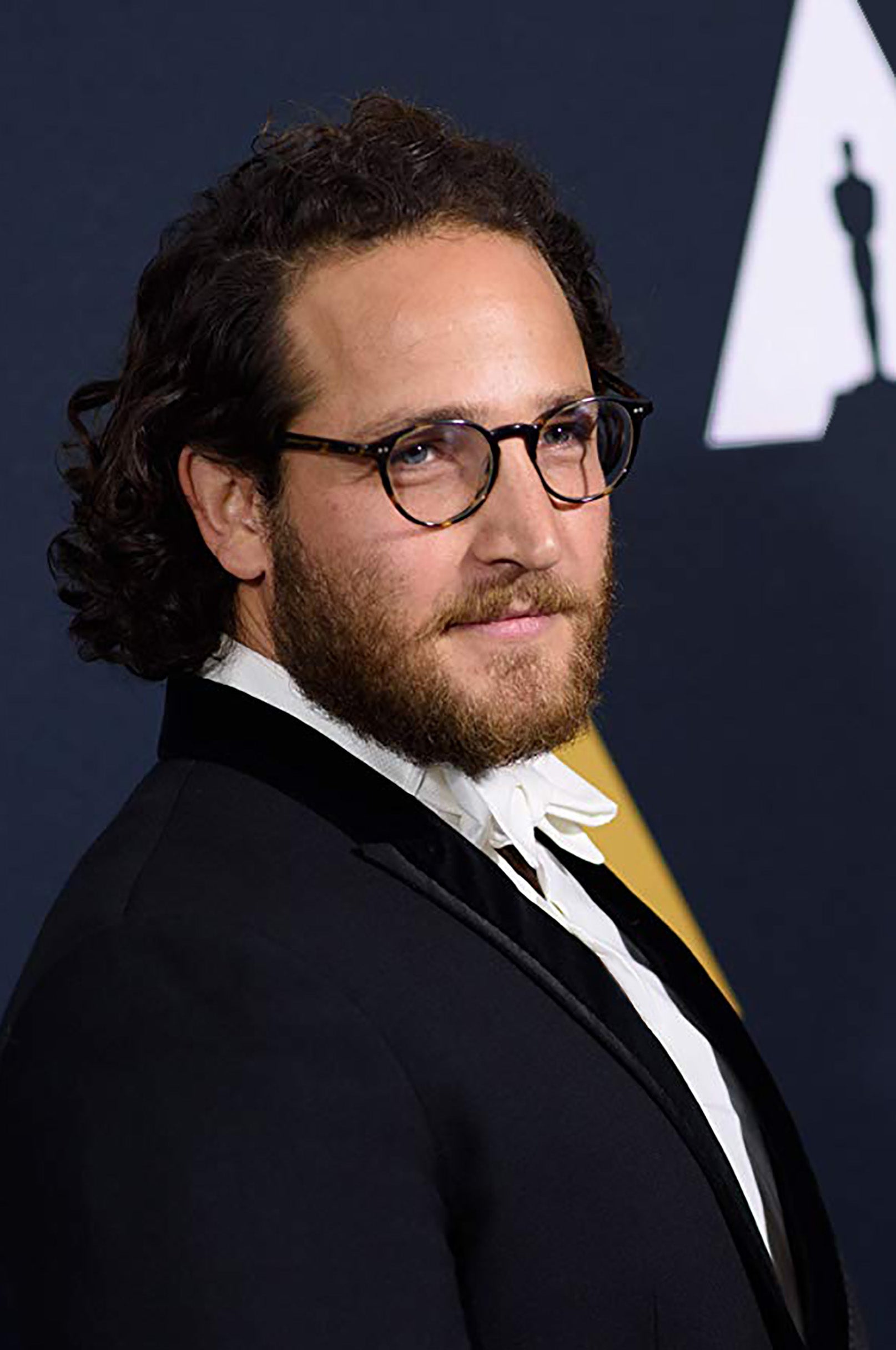
In the film, the musician Anas Maghrebi, whose gorgeous songs add emotional heft to several sequences, expresses frustration over the label “refugee artist”, while Bahila Hijazi, from Syria’s first all-female rock band, says they’ve become simply, “lab rats for people to make documentaries about”. Burning with indignation, rapper Mohammed Abu Hajar performs a fiery musical rebuke to a German society he feels demands him to dilute his cultural identity and integrate, but, at the same time “others” him with negative stereotypes. “It doesn’t matter how long you’ve been living here, doesn’t matter if you get the German citizenship or not, which I did, we are still perceived as refugees,” he tells me. “To feel a purpose you need to feel organic, and I don’t feel organic in this place, to be honest.”
“We are tired of being stigmatised as a refugee,” says Brisly. “It’s our old identity.”
Gerson, who consciously avoids using the term, in part because it is used too loosely, understands. After making All These Voices, he started receiving lots of scripts for Holocaust movies. “While I appreciated that, that wasn’t exactly the next thing I wanted to do. So I think there are different means of limiting someone’s expression. The question is, how do you work around it?”
While he treats everyone in the film as individuals and gives their work room to breathe and exist on its own terms, he frequently asked himself about his role in the process. It was important to include people’s anger and frustration, he says, “because it involves me, in some regards, and who am I to be telling their story? And this is a film about storytelling. This is a film about what does it mean to tell your story? And how do you craft your narrative and share it with people? But I was asking myself in the process of making this: am I part of that machine? And how am I serving or not serving them? Am I serving myself?”
The artists were not well-served in Syria where there were tight controls on their freedom of expression. Hajar says he was part of a generation that was “programmed not to think”. Every day at school they were made to chant the Syrian national anthem and some other words which puzzled him. “They were something like, ‘I am a little pioneer of the Ba’ath Party, I declare my willingness to participate in building the Arab Nationalist Socialist Party.’” When he asked his friends if they understood what they were saying, he suddenly realised that no one else was questioning them. “I felt so guilty. You learn that you can't question those things because when you ask your family if you can, they say no. And the fear you see in the eyes of your parents tells you the whole thing: you can’t question what is happening.”
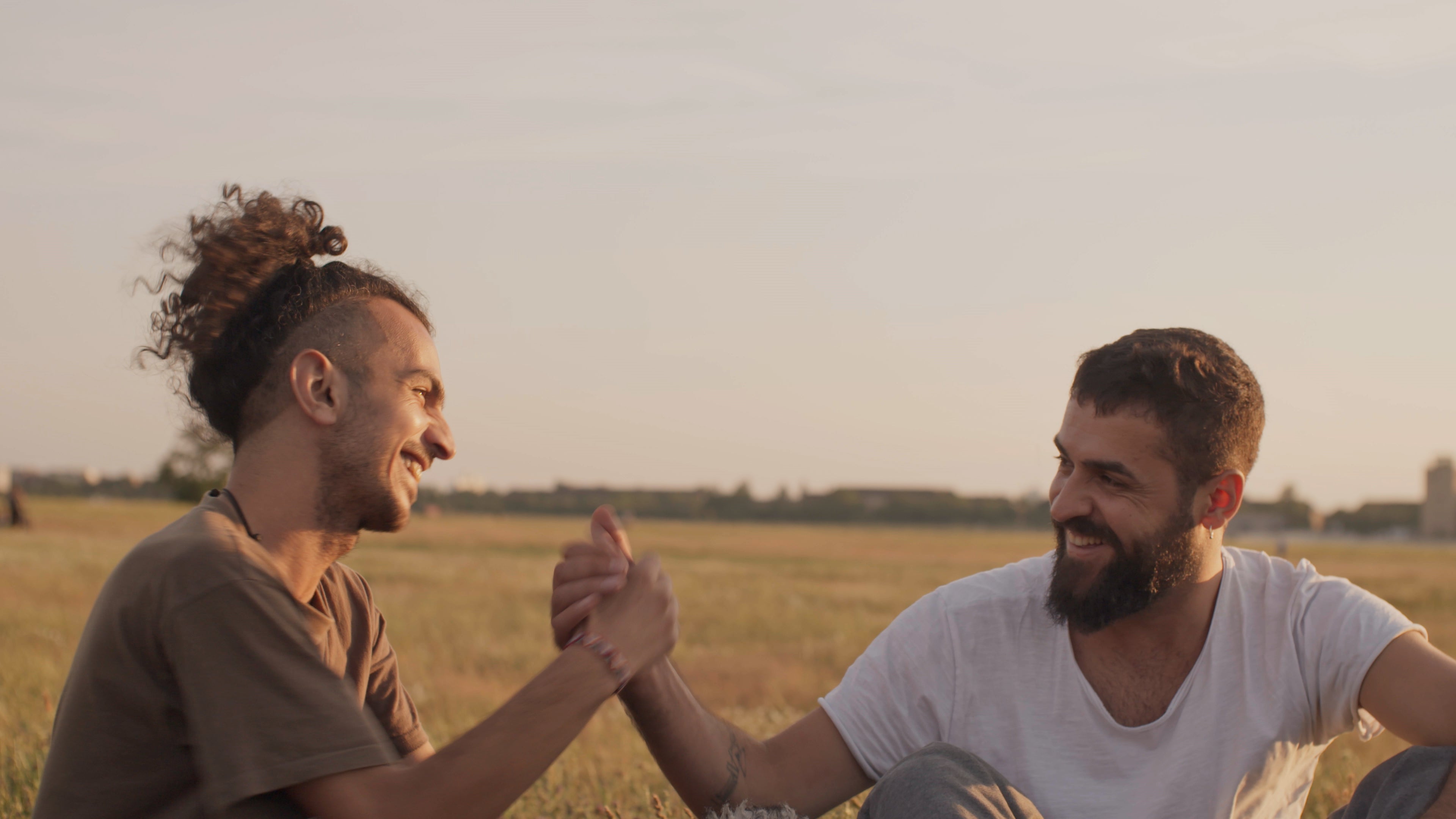
Brisly moved to Syria from Kuwait aged 10 and is currently working on a comic book that will expose the “crazy lifestyle” of her school days, and include a comparison between the state and Isis curriculums. “When I was a child under the Ba’ath Party, we had this military class and every day we had to have a uniform like soldiers and learn how to use a Kalashnikov.” She laughs. “I forgot how to use it now, so don’t worry.”
Raised in a home full of conflict, she would escape into her own bubble at night and draw. At 21, she started working for a TV company making animated shows for children, going freelance after five years. As an artist, the subjects she could talk about were limited by the regime. “I felt like I was in a prison in my head. I couldn’t really do many things.”
Hajar was similarly restricted. Having been mildly politicised by the war in Iraq, he took inspiration from political rappers in the United States such as Immortal Technique and started writing lyrics of his own at age 18, becoming part of the first generation of Syrian rappers. However, there were places he feared to go in his songs, at least overtly.
“I couldn’t dare to be very political, very confrontational with the regime. Sometimes when even just talking about Syria, you needed to filter it and pretend that you’re talking about Armenia or Iraq. So it’s a certain code that we learned through living in Syria to protect ourselves.” Nevertheless, he was not afraid to touch on culturally sensitive issues, and in 2006 wrote a song criticising honour-crimes laws in Syria, after coming close to being the victim of an honour killing himself. “So it was always about being political and talking about things that other artists did not dare to talk about.”
At his first live concert, in his home town of Tartus, in 2009, Hajar took to the mic feeling “very powerful, very empowered, and very strong”, because people had travelled from all over the region to see him. Caught up in the moment, he shouted, “We are the new generation, you can’t govern us the same way you did our parents.” He felt free. “Then I looked at the eyes of my mum and my aunt and I saw they were so scared, and I learned my lesson.”
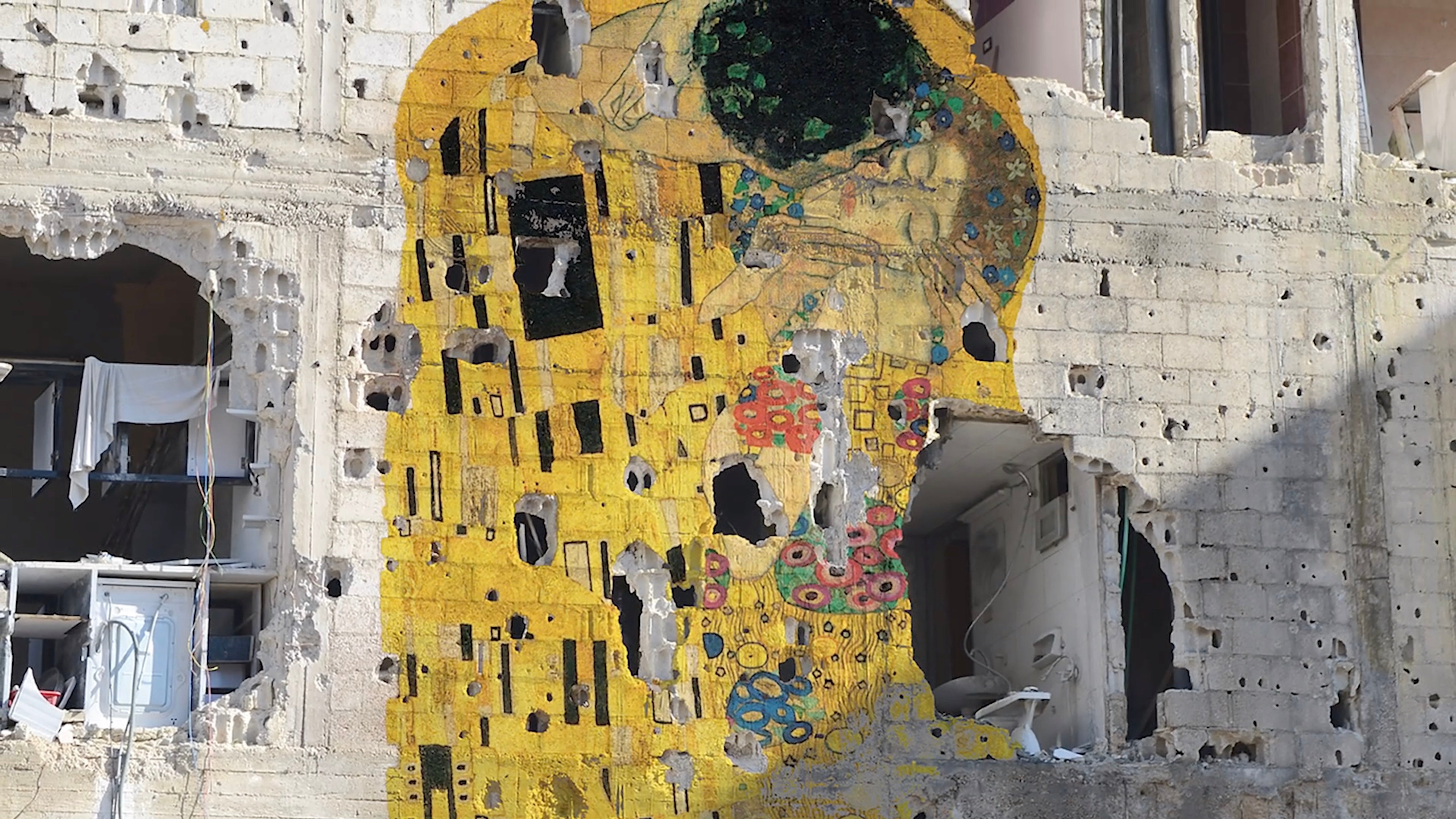
Even so, for five minutes it seemed like he had got away with it. But then a man arrived on the orders of a police officer in the audience and pulled the plug. “I was told to run away otherwise the officer would demand my presence in jail.” His brief moment of freedom was an illusion. However, it would not be long before Hajar and other artists sensed change in the air.
When the Arab Spring erupted in Egypt, Syrians immediately started to ask whether the same thing would happen in their country. “We said, ‘Are we going to organise something here?’” Recalls Hajar. “We knew that it’s like dominoes, that it is going to escalate, and there will be something. You could feel it in the streets. People were waiting for something to happen. They were scared of it or they were happy, but you could see that people changed.”
The trigger for the peaceful uprising that tragically led to civil war, was the arrest and torture of teenagers from Daraa, after the threat, “It’s your turn now Doctor”, was found sprayed on a wall at a high school referring to the Syrian president, Bashar al-Assad, who was once an Army doctor and studied ophthalmology.
Graffiti had appeared in Syria before but the regime came down particularly heavily this time because of the important role it had played in Egypt.
“They knew that if they allow for those little voices, for those little spaces, that things will fall out of control,” says Hajar. “Because Syria is not Egypt. Syria is based on a state that regulates and controls every single detail.”
I never felt I was close to death before the revolution. But when I was arrested after the revolution had started, I felt a couple of times that I wished for death to come
When the revolution started, “It blew up everything”, recalls Brisly. At first, she responded by taking part in protests, delivering medical supplies, and helping to organise field hospitals, not by using her art. Then, in 2012, a photograph of a boy who had lost limbs during a massacre in Daraa caused her such “strong pain”, that she felt compelled to use the image for what would become the first of a series of drawings called Leave Us.
She had been doing some work using the moniker Elvis Brisly, but after a lot of arrests, an activist said: “If people are struggling in prison because of us, we can’t hide behind fake names anymore.”
“That encouraged me,” she says, “and I immediately signed it with my name.” With more freedom to express herself, she was becoming a political artist.
“I started just because I was in pain. I didn't realise that this would be important as well, to share it with people and to raise awareness about things.”
When she posted the drawing on Facebook, many people who followed her as an activist were surprised that she was also an artist. A graphic designer asked her why she had been hiding and leaving it to relative beginners like him. Alternative journalists then started picking up her work and attaching it to their articles on social media. “This encouraged me to do more. And every time something happened, I used to draw about it.”
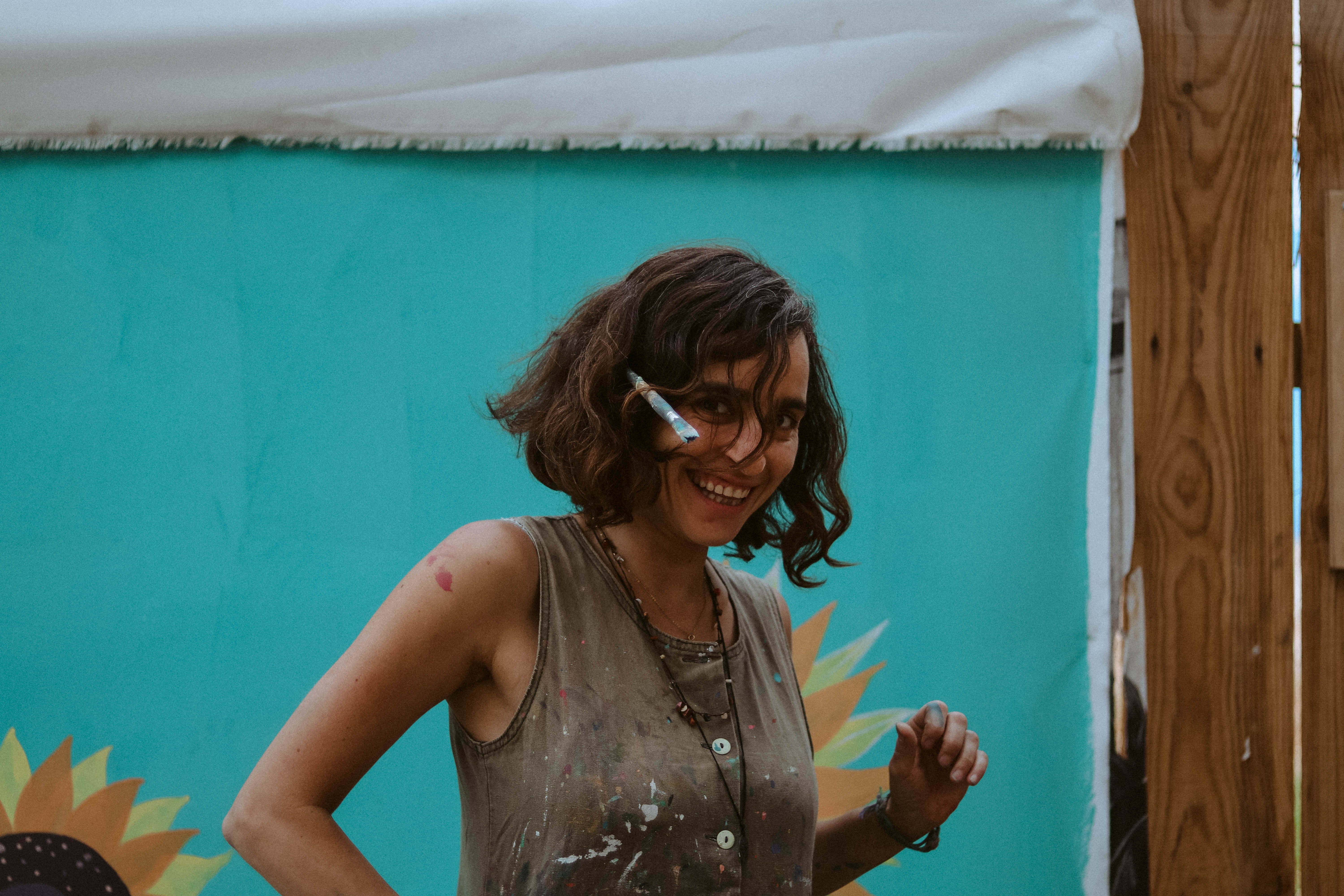
Some of her old friends unfriended her, scared of the consequences from a regime which, we learn from the documentary, was coming after people for ‘likes’. Brisly does not blame anyone for not wanting to be involved. “It’s really scary,” she says. “But I didn’t have a really strong relationship with my family and that made it easier for me to make a decision because I have nothing to worry about for me. They had more responsibilities. They just didn’t want to disappoint their family, maybe. I don’t know, I don’t dig much into this.”
Hajar remembers his sister asking him if he was trying to go to prison. He wasn’t, but being out on the streets singing with protestors meant that he was losing his fear. “So it was easy to expand my music,” he says. He wrote a song called “Political Statement” and he says he remembered that he was, “writing the lyrics and saying, ‘this is exactly how I feel now. I’m not scared anymore. I’m not filtering. I’m not pretending that things are good and I can be playing the smart kid. No, I’m just saying it as it is.’” Two days later, he was arrested.
People in his circle had been in and out of jail so often before the revolution that it had become normalised. Hajar had himself experienced spells inside, which usually meant one or two days of detention, with little torture. By March 2012, the situation was different. This time he was held for two months.

“With the revolution, I think they were taken by the urgency. So they became very violent and very brutal. I never felt I was close to death before the revolution. But when I was arrested after the revolution had started, I felt a couple of times that I wished for death to come.”
After he left prison, he continued to work with the protest movement. When a second attempt was made to arrest him, Hajar feared that he would not survive another term in jail, and fled Syria.
“Whenever I left before, I felt sad because I missed my friends, my family, my life. This was the first time that when I crossed the border and looked back and saw the flag, and the picture of Assad, I took a long breath and said: ‘Oh God, finally I am out.’”
Brisly decided she had had enough after almost being arrested at a checkpoint while delivering medical supplies. She had hidden a serum under the car seat, she told the Al Araby TV network, which, if discovered, “was enough to be sentenced for life ... Luckily for me, one of the soldiers was drunk and told me that beautiful women like me should not be stopped, so he let me go.” Badly shaken by such a close shave, she left.
Later, she heard that her brother had been killed by a landmine while being forced to serve in the Syrian army.
The Story Won’t Die conveys the disillusionment, disorientation and sheer exhaustion that the artists felt after leaving Syria. At a rap battle in Chemnitz, Hajar talks about the complexity of his newfound freedom of speech. In Syria, his words made an impact. In Germany, they don’t seem to resonate. “So then the question is,” says Gerson, “if it’s not resonating, do I keep going? Have I failed?”
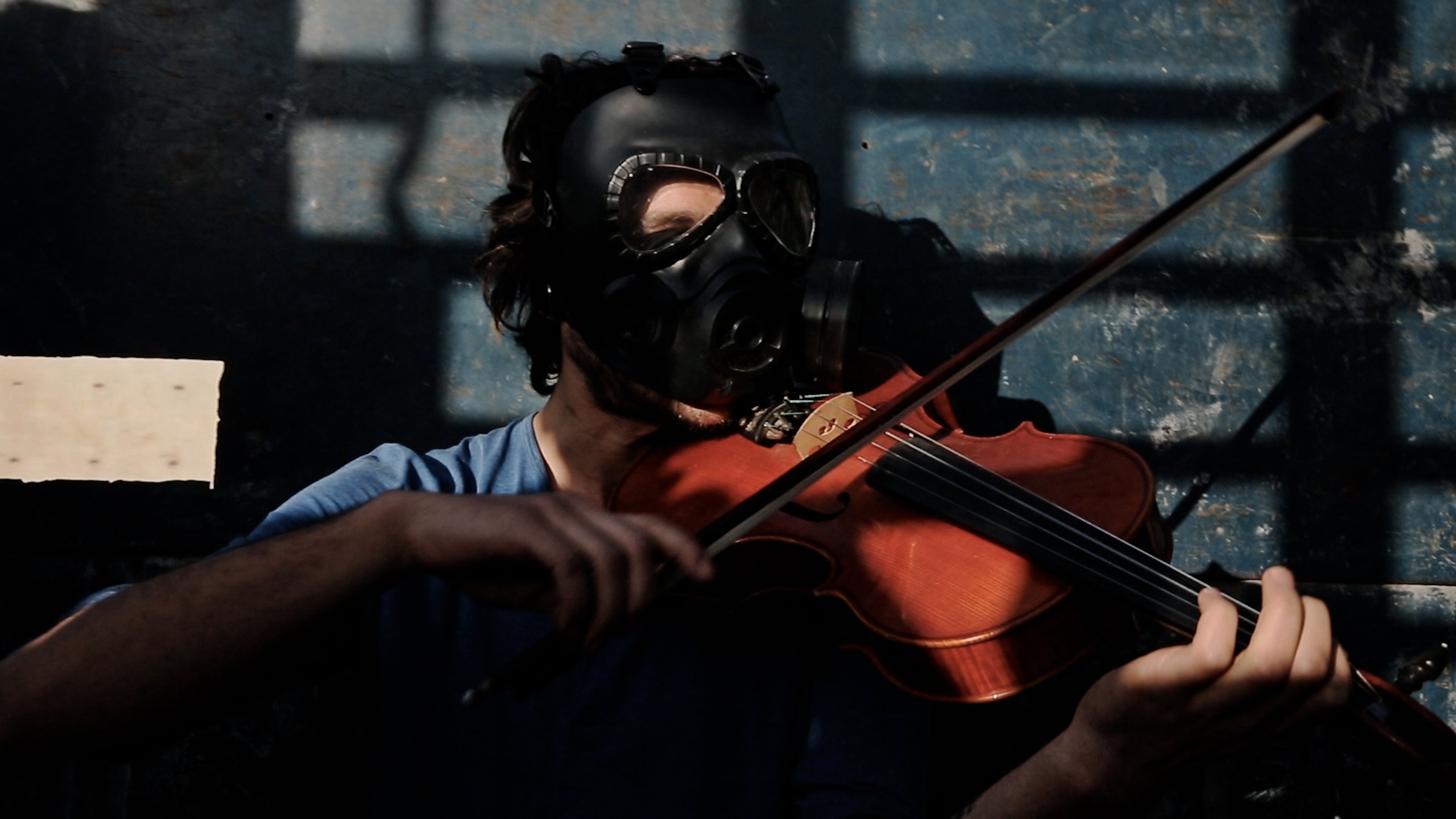
For the first time, Hajar tried writing something that was about his personal feelings and not, he says, a “public pose”. Given Gerson’s idea of the film being about storytelling, I suggest that this lends his arc the shape of a coming of age story.
“I can say that for Abu Hajar, that idea of going from purely political prose to making more internal prose and realising that your own happiness as a human being is a political act, that one has the right to express what’s going on inside as a means of speaking of the world outside, that for sure is a coming of age.”
It was perhaps inevitable that outside Syria, the individual personal voice would supersede the collective voice because the war didn’t end for them the moment that they crossed the border. “People think that when you are in exile you are fine, you are safe, you are not struggling with anything, but the war is inside our head,” says Brisly. “We can’t really forget things.”
Hajar had a need to talk about the guilt he felt for the people he left behind. “I told them, ‘hey, there is a revolution. Let’s go for it.’ And then maybe they died in Syria or they are still stuck there and I’m here. So the personal and the political are very intertwined, and I would say that it took me a lot of courage to go: ‘Okay, I’m gonna talk about something I feel right now,’ and throw it out to the public.”
For Gerson, the film is also about “how you find happiness despite the awfulness of the world”. When his father died of a rare brain disease, while Gerson was finishing the editing, the people to whom he had told his father’s story were the first to rally around to support him. “So for me, that’s why these guys have become, in a way, my best friends over my grief, because they gave me great hope. Quite literally.”




Join our commenting forum
Join thought-provoking conversations, follow other Independent readers and see their replies
Comments